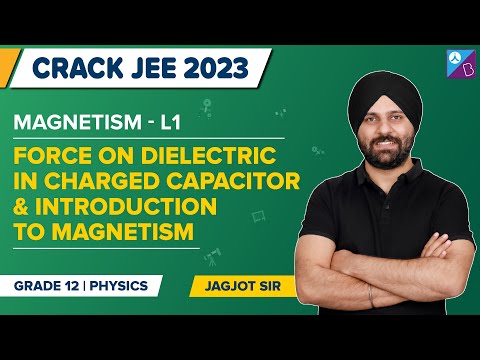We have seen and played with magnets since childhood and have witnessed magnets used in many devices like AC, refrigerators, TV, earphones and also as door catchers. Magnets are used in various applications in our day to day life. Magnet is a material that has the capacity to create magnetic fields. The area around a magnet where the magnetic force can be felt is known as the magnetic field. This magnetic field cannot be seen and is the notable property of a magnet.
It is a vector quantity that defines the area of influence of the magnet. In this article, let us learn about magnetic field intensity due to a straight current-carrying conductor of finite length.
Magnetic Field Intensity Due to a Straight Current-Carrying Conductor of Finite Length
As we know, current-carrying conductors experience magnetic fields. Any mass will produce a gravitational field and can also interact with that field. A charge produces an electric field and also interacts with that field. Since moving charge interacts with a magnetic field, we might expect that it also creates that field.
Consider a straight conductor AB carrying a current (I), and magnetic field intensity is to be determined at point P.

Refer to the above image. According to Biot-Savart law, the magnetic field at P is given by
Let AB be the conductor through which current I flow. Consider a point P, placed at a certain distance from the midpoint of the conductor. Consider the small current-carrying element “dl” placed at point c. It is at a distance “r” from point p. “l” is the distance between the centre of the coil and dl is the length. Using the biot-savart law, the magnetic field at point P due to current carrying element “dl” is,
Since the angle between I dl and r is (180 degrees) hence,
= dl sin\theta\end{array} \)
= rd\phi\end{array} \)
From equation (1)
Hence,
Then the total magnetic field at point P, due to the complete length of the conductor, is
Hence,
For any conductor of infinite length,
The direction of the magnetic field due to a current carrying conductor can be obtained by using laws like
(i) Right-hand palm rule
(ii) Right-hand thumb rule
(iii) Maxwell Right-hand screw Rule
Read More: Electricity and Magnetism.
|
Related links |
|
Accelerate your JEE Main & Advanced Exam preparation by
watching this video about magnetism and force on dielectric in charged capacitor

Frequently Asked Questions on Magnetic Field
1. What is the direction of the magnetic field due to an infinite long straight wire?
When the thumb of the right hand is aligned in the direction of current flow, the magnetic field produced by current in an infinite straight wire points in the direction of the curled fingers of the right hand.
2. Magnetic field is represented using which alphabet?
Magnetic field is represented using the letter B.
3. If the wire in the form of a loop forms a full circle of radius R with current I. What is the magnitude of the magnetic field at the centre?
4. What is the magnetic field due to semi infinite wire?
The magnitude of the field from a semi-infinite wire is half of that of an infinite wire.
5. Does magnetic field due to infinite wire depend on length?
No, it is dependent on current, location where the magnetic field will be estimated and the medium.
Stay tuned with BYJU’S for more such interesting derivations in physics, chemistry and maths in an engaging way with video explanations.


Comments